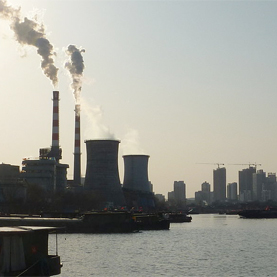Enclosure is a word that has connotations of the comfort of an embrace and also the isolation of the prison yard.
In my thinking around ideas of paradise it reflects the dilemma of accepting sanctuary but also confinement.
Expulsion from Eden was surely a release not a punishment, for in reality the delights of an earthly paradise where all is provided and nothing changes would not satisfy our hungry curiosity and need for stimulation.
The exhibition ‘Enclosure’ at Danielle Arnaud covered similar opposing themes.
Gabriela Schutz’s wall sized graphite drawings ‘Holyland’ capture the bleak beauty of a territory divided by religious belief.
Particularly emotionally charged at the moment with the terrifying escalation of animosity and violence that the people caught between these fragile borders are suffering.
From stark realism to enchanted fantasy. Sarah Woodfine seduces us with glitter and glass in a sealed world.
But this is a grey landscape, a place of possibly macabre incarceration.
Also alluringly claustrophobic are Stephen Walter’s dense drawings of woodland. The eye scans the scene for an opening, as if you were within the wood hearing a sudden crack in the undergrowth…
Walter’s witty idea of using a hagioscope to scan the intensely detailed map of his invented ‘Nova Utopia’ is good fun.
The back history that he has established in his conception of this world is obsessive.
It has some of the same social and cultural grammatics that Grayson Perry uses in his contemporary commentaries on society.
The circular peephole can be manually slid across the map revealing new zones and topographies. It is not a world view but a segmented journey across the land as through an ancient voyagers telescope.
Marion Coutts also edits her landscape to a vignette. With laborious care she removes the borders from the frame of the film leaving behind a floating island.
Only subtle movement within the image reveals it to be a film rather than a static projection.
My pieces ‘Would’ (1&2) hung for the Summer exhibition at Ochre Print Studio have a layered translucent surface which adds suggested movement.
This work reflects the aura of an imagined event.
A magical space, like an abandoned walled garden.
The remnants from an age of explorers who brought back the first examples of exotic flora now thriving in the Suffolk landscape.
Just a few miles from where I was born is the Henstead Exotic Garden.
Planted 10 years ago by Andrew Brogan it seems impossible that these sun worshippers would survive those icy easterly winds from Siberia that gave us all chilblains.
I have met a lot of special people at the RCA – the graduates of printmaking 2014 are ALL amazing people
Here is some of their work
Sad to see them move on but hopefully to amazing new adventures.
It was a privilege to help with all the prep work involved in setting up the show. Now we know what to expect next year…
Such a buzz when the whole college comes together
A strange bubble of expectation is created
To see a short film of SHOW2014 click on this link
One room which stood out for me at Show2014 was a collaboration between two artists Marlene Steyn and Abraham Kritzman
It wasn’t clear who made which pieces but the room worked as a whole
so much to engage with
and from the RCA jewellery department the talent of Max Danger –
Bees are precious as demonstrated in these beautiful pieces
with an eye on the ecological importance of bees as well as a sense of humour
Confinement. I don’t like boundaries that restrict and I don’t want to lose being an artist to being a printmaker.
I don’t really like a show that is put together based on process yet I seem to be more and more being involved with such projects.
I went to see IMPRESS at the Courtauld Gallery Somerset House – the strapline was Print Making expanded in contemporary art.
Some works were as clunky as the premise, and no show transports you when there are wires marking your viewing boundaries and officious invigilators watching your every move.
Filigree in silver onto a printed circuit board – Cornelia Parker and silver work well together
A favourite was the impressions of controlled combustions taken onto photo-sensitive paper of spores from lycopodium plants.
Definitely an opening here for the imagination.
















































































